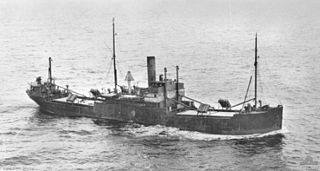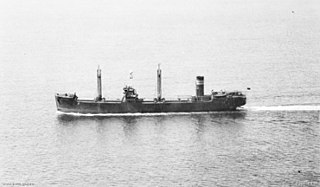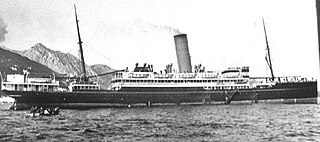 W
WSS Fingal was a Norwegian merchant ship of 2,137 tons which was sunk during World War II off the coast of Australia.
 W
WSS Iron Crown was a 3,353 GRT Australian iron ore carrier which was sunk during World War II by a Japanese submarine.
 W
WSS Iron Knight was a 4,812 GRT Australian iron ore carrier which was sunk during World War II by a Japanese submarine.
 W
WMV Koolama was an Australian merchant vessel which sank as a result of several attacks by Japanese aircraft in February–March 1942. It was also the centre of the Koolama Incident, an alleged mutiny resulting from these attacks.
 W
WMV Koolinda was an Australian general cargo and passenger ship which operated as a coastal steamer off Western Australia from 1930 to 1959.
 W
WMV Macdhui was a steel hull passenger and cargo motor vessel built by Barclay Curle & Company at the Clydeholm Yard, Whiteinch, Scotland for Burns, Philp & Company, Limited, Sydney NSW, Australia. The ship was launched on 23 December 1930 and completed during March 1931. The ship operated with the company's Burns, Philp Line with service to Papua and New Guinea. She was sunk in 1942, as a result of damage suffered by being hit by bombs from Japanese aircraft, near Port Moresby.
 W
WMS Maetsuycker was a Dutch cargo ship and later converted to a hospital ship. She was named after Joan Maetsuycker.
 W
WHMS Nairana was a passenger ferry that was requisitioned by the Royal Navy (RN) as a seaplane carrier in 1917. She was laid down in Scotland in 1914 as TSS Nairana for the Australian shipping line Huddart Parker, but construction was suspended after the outbreak of the First World War. Following resumption of work, the ship was launched in 1915, and converted to operate wheeled aircraft from her forward flying-off deck, as well as floatplanes that were lowered into the water. She saw service during the war with the Grand Fleet, and in 1918–19 supported the British intervention in the Russian Civil War.
 W
WMV Neptuna was a 5,952 ton cargo motor vessel. She was launched as MV Rio Panuco in 1924, renamed MV Neptun in 1931 and finally became MV Neptuna in 1935. She was sunk during the Japanese air raid on Darwin on 19 February 1942, during World War II.
 W
WThe Nimbin was a steel screw steamer built in 1927 at Copenhagen, that was the first motor vessel placed into the New South Wales coastal trade. It was owned and operated by the North Coast Steam Navigation Company and was the first Australian registered merchant ship to be lost during World War II when it struck a mine laid by the German auxiliary cruiser Pinguin. The Nimbin was on its way from Coffs Harbour to its home port, Sydney, with a cargo of bundled three-ply timber and a cargo of pigs. One third of the ship was blown away and it sank in three minutes. Seven men were killed. The remaining thirteen clung to bundles of plywood. Some hours later an air force plane from RAAF Base Rathmines saw the survivors and directed the coastal ship SS Bonalbo to the scene to retrieve them.
 W
WSS Zealandia, nicknamed "Z", was an historically significant Australian cargo and passenger steamship. She served as a troopship in both World War I and World War II. Zealandia transported the Australian 8th Division. Her crew were the last Allied personnel to see HMAS Sydney, which was lost with all hands in 1941. Zealandia was sunk in the air raids on Darwin of 19 February 1942.